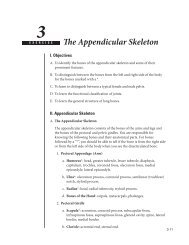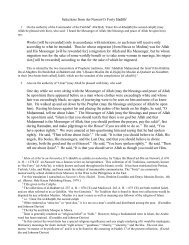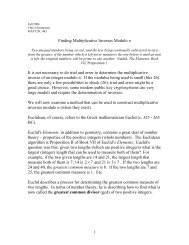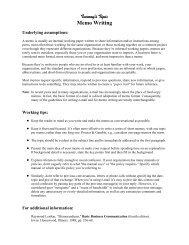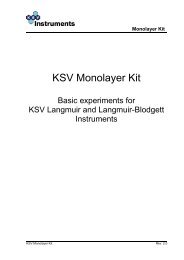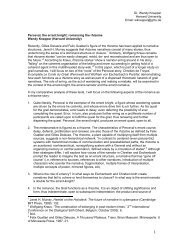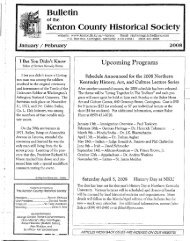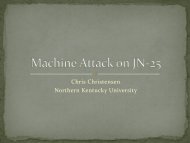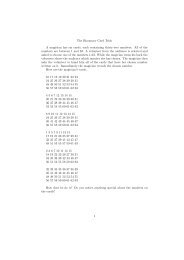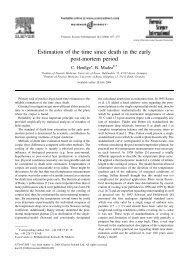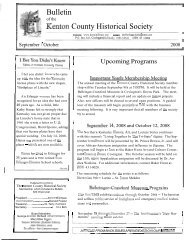SMS4 - Northern Kentucky University
SMS4 - Northern Kentucky University
SMS4 - Northern Kentucky University
Create successful ePaper yourself
Turn your PDF publications into a flip-book with our unique Google optimized e-Paper software.
12 JEREMY ERICKSON, TAYLOR UNIVERSITY<br />
rounds, Magma runs to completion, but finds an empty variety, even though the<br />
SAT solver finds the correct key given the same set of equations.<br />
In the case of 4 rounds, using only X 2 Y − X = 0 for two plaintext/ciphertext<br />
pairs finishes in 22.900 s, whereas the standard representation requires 26.359 seconds.<br />
The XY − 1 = 0 representation runs in 22.950 s. Thus, the three representations<br />
seem almost equivalent. With only one plaintext/ciphertext pair,<br />
X 2 Y −X = 0, Y 2 X −Y = 0 runs in 4.000 s, while XY −1 = 0 runs in 3.630. These<br />
particular cases seem to indicate that even if the system did work as expected, the<br />
various S-box representations are mostly equivalent. Thus, only a small speedup<br />
can be obtained from XY − 1 = 0.<br />
6. GF(2 8 ) Attacks<br />
Using the method of [8], I wrote a Magma program to test the attack over GF(2 8 ).<br />
As discussed in [4], [11], and [1], XSL would not be expected to outperform a good<br />
Gröbner basis basis algorithm such as F4. Thus, Magma’s builtin F4 algorithm<br />
is used, rather than XSL. The equation system from [8] is used almost unaltered.<br />
However, there is an off-by-one error in their indexing of all X variables (resulting<br />
in the use of X−1 in the first round), and their model of the S-box is taken from<br />
[9] unaltered and does not take reversal into account. Thus, I increased the index<br />
of the X variables by one and utilized my corrected S-box model from section 2.1.<br />
This resulted in a system that produced correct results for 4 rounds, with runtimes<br />
consistently between 240 and 250 seconds, and using 283.53MB of RAM each time.<br />
Because this attack used only one plaintext/ciphertext pair, and it has a time<br />
measurement between the values for one and two rounds with the similar GF(2)<br />
attack (187.120 and 325.910 s, respectively), with similar results for memory, the<br />
GF(2 8 ) attack seems to have similar efficiency to the GF(2) attack, at least for four<br />
rounds. However, upon testing with more rounds on my system, Magma runs out<br />
of memory, so I was unable to determine how the behavior varies with more rounds.<br />
Thus, I was not able to determine whether the speed claims in [8] are consistent<br />
with experiments, other than that their prediction of 2 59 for the attack on four<br />
rounds is far too high. Further experimentation on a system with more available<br />
RAM is necessary.<br />
7. Further Work<br />
There are many possible improvements which I have not had time to explore. One<br />
area of exploration is mixing guessing with finding results algebraically. Either some<br />
of the key bits or some of the intermediate variables could be guessed. Experiments<br />
could be performed to determine the optimal number and choice of variables to<br />
guess to speed up the attack.<br />
Another possible improvement would be to find the Gröbner basis of some part<br />
of the cipher, such as the S-box, and use that in place of the direct representation.<br />
Thus, some of the work of the solver would be done ahead of time. When we<br />
performed this experiment on DES during the summer REU portion of my research,<br />
it actually caused a slowdown. However, experimenting with the effects of different<br />
portions of precomputation on different portions of the cipher could yield fruitful<br />
results.<br />
The ordering of the variables is significant in the case of the F4 algorithm used<br />
by Magma. Thus, experiments could be performed with a different ordering of



